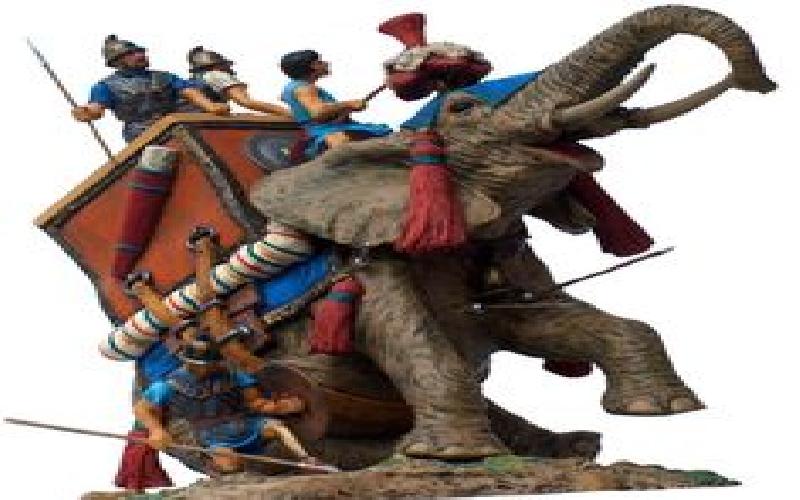War Elephants


Elephants were the mainstay of Kings and soldiers on the battlefield for thousands of years. They served their purpose and have left behind their imprint
Indian history extends back to almost 5000 BC. History, as we are aware, is an account of wars and the weapons of war. One of the weapons of war that existed for over 6000 years was the elephant. One reason for this was its huge size and the second reason was its availability in hundreds of thousands of numbers. It is estimated that at one time over a million elephants roamed the jungles of India. It was thus logical that kings and generals would incorporate the elephant as part of their army.
The first account of the elephant as an instrument of war is available in the Mahabharata.
This beast was used as a type of shock force and was quite lethal in a frontal charge. The elephant soon became the mainstay of the Hindu armies of that period. Most generals used it for an assault. One can imagine the shock of an elephant charge at 30km an hour on the opposing troops. The elephants were also given special armour and normally the king or general himself came mounted on an elephant.
The first encounter of the elephant with opposing enemy forces from outside the subcontinent was at the battle of Hydespes in 326 BC. This is the famous battle between Raja Porus and Alexander the Great. In this battle despite a colored write-up by western historians that Alexander defeated Porus, yet the facts point to Porus having had the better of the exchanges. In fact, Greek historians have admitted that the appearance of nearly 200 elephants of the army of Porus in the morning light completely unnerved the Greeks who then decided not to go ahead. Alexander also agreed to a truce and gifted vast lands and authority to Porus. He was so impressed by the elephant corps of Porus that the Greeks soon had their own elephant corps and this was used to lethal effect by the successor of Alexander in the east namely Seleucus Nikator.
The Hindu kings now made the elephant a standard part of their arsenal. As per reports available large forces of elephants to the tune of 5000 or more war elephants were maintained by the Magadha kings and the Nanda and Gupta dynasty. in fact, even Mohammed of Ghazni while invading India avoided combat with Raja Bhoja in Central India mainly because of his formidable elephant corps.
The elephant ruled the roost on the battlefield till the arrival of gunpowder. The first effect of this was seen in the First Battle of Panipat in 1526 where Babur defeated Ibrahim Lodhi. Babur at that time introduced a new element in war, namely cannon and gunpowder. These cannon of Babur created a lot of noise and smoke and badly affected the elephants and they lost their ability to strike forward.
After this period, the elephant lost its pre-eminent position on the battlefield, but still kings and generals used it for another 300 years. After the 19th century, the elephant became obsolete as a weapon of war. But the period when the elephant was in its prime war had a different connotation and the elephant was the pivot. Those are days that have elapsed and we can only read and savor the glory of the elephant as a king on the battlefield of days went by.
The Philippines was invited by Foreign Minister Arita of Japan to take part of their program called Greater East Asia Co-Prosperity Sphere. And because our country’s citizen doesn’t want to be under a foreign occupation, the government officials did not believe it and thus did not join the invitation of the Japanese Government..
Taj Mahal is one destination that every traveler to India wants to witness. It is an archaeological marvel that has stood the test of four hundred years and remained unparalled in its beauty.